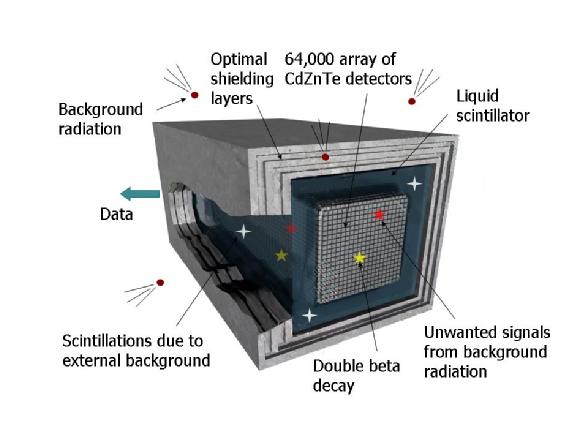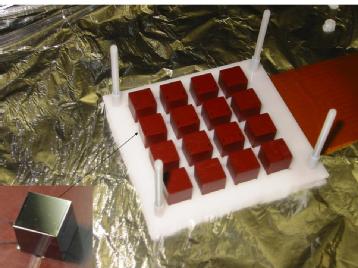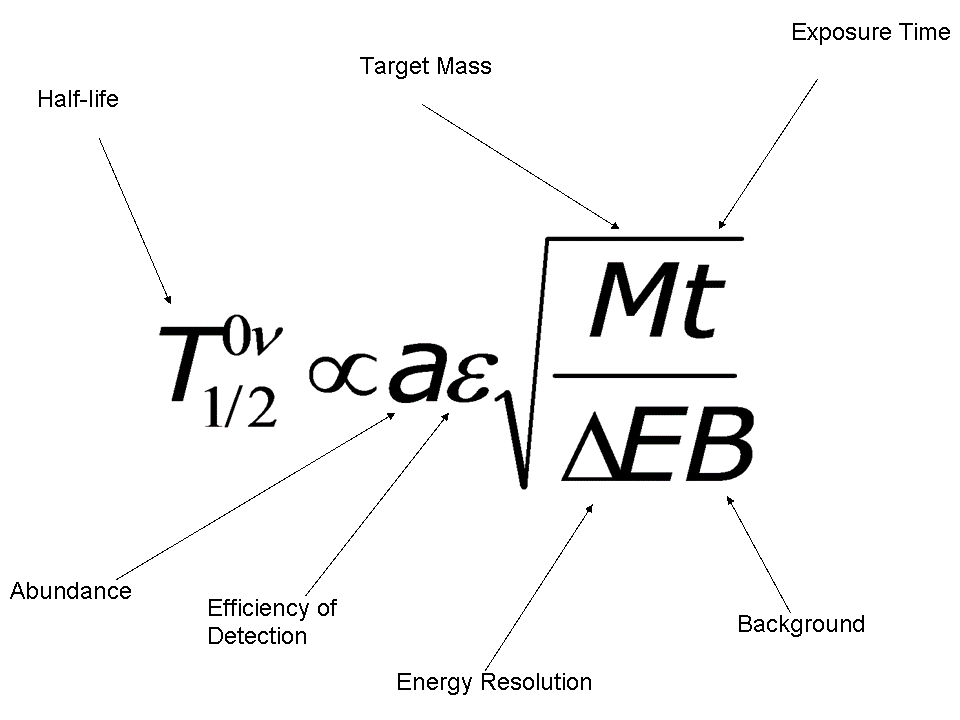COBRA

Figure 1: Full COBRA model. 64,000 CdZnTe semi-conductor detectors surrounded by liquid scintillator and an optimised, multilayer shielding.
The COBRA (Cadmium-Telluride 0-neutrino double Beta Research Apparatus) experiment, see Figure 1, was intended as a UK led initiative. Its purpose is to search for double beta decay using room temperature CdZnTe (CZT) semiconductor detectors.
As a semiconductor, it is possible to produce CZT crystals with good energy resolution and low levels of intrinsic radioactivity. CdZnTe contains a sizeable number of possible known isotopes that may decay by double beta decay. In total there are five β−β− and four β+β+ isotopes intrinsic to the detector. The main focus will be on 116Cd and 130Te, which are suited for double beta decay searches due to their high Q-values (2805keV and 2529keV respectively).
COBRA follows the strategy that source and detector are identical, a method proven to be successful in various other double beta decay approaches. CZT crystals are routinely grown to a size of 1cm3, each with an active mass of 6.53g, see Figure 2 below.


A full-scale version of COBRA would require 64,000 CZT crystals (420kg), see Figure 1, in order to have enough mass to achieve a neutrino mass sensitivity of 50meV and below. The 64,000 crystals will be arranged in a cubic array of 40x40x40 1cm3 detectors and surrounded by an optimised shielding to protect against unwanted background radiation.
The CZT detectors will be enriched to 90% in 116Cd resulting in a neutrino mass sensitivity of 50meV and below. Crucial experimental parameters, besides the mass of the detector, are energy resolution and the number of contaminating background events in this range, see Equation 1. To obtain sensitivity to T1/2 = 1026y in 5 years of operation, a resolution of delta E < 2% (FWHM), and a background rate in the signal region of < 0.001 counts/keV/kg/year are required.

Advantages of COBRA
The COBRA concept offers a number of advantages for double beta decay searches,
including:
• The use of semiconductor detectors allows good energy resolution and can be
produced with little intrinsic radiation.
• The detectors can be operated at room temperature which omits the need for
expensive cryogenics.
• CdZnTe offers 9 of the 35 possible isotope candidates for 0νββ-decay.
• The source (CdZnTe) is also the detector reducing the risk of loss of information.
• The modular design allows easy upgrades to the experiment where necessary.
• Industrial development of CdZnTe.
• There is the possibility of spatial and tracking information.

